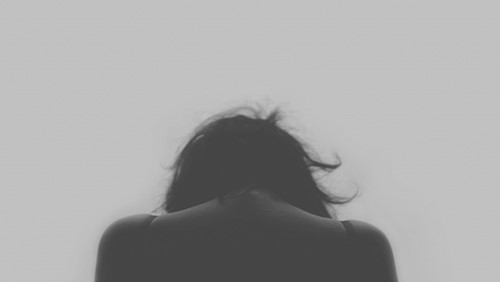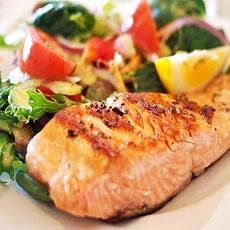How to cure the winter blues
Treatment for SAD
What good is the warmth of summer, without the cold of winter to give it sweetness John Steinbeck, Travels with Charley
Scientific research has found five different approaches FOR treating Winter Depression:
- Vitamin D.
- Light Therapy.
- Melatonin.
- Antidepressant medication.
- Counselling.
Let's look into each of these therapies:
The key is to improve serotonin levels and also reset the body clock, which is done either with Melatonin or Light Therapy, or both (2).
Vitamin D
The mechanism by which Vitamin D interacts with depression is yet unknown, but a study (5) reported that it may enhance serotonin production and therefore improve mood.
According to Melrose, (2015) and Young Sup Woo (2019) (3, 6), low levels of Vitamin D are linked with depression and people suffering from SAD have deficient levels of this vitamin.
Low levels of Vitamin D are usually caused by unbalanced diets (eating food that lacks this vitamin) or lack of outdoor activity: sunlight is necessary for your body to make Vitamin D from cholesterol.
It is the sun's UVB rays that provide the energy to synthesize Vitamin D.
Sunlight and Vitamin D
Exposing 50% of your skin area (without sunscreen) for 12 minutes at midday, in mid latitude USA produces an amount of Vitamin D equivalent to supplementing 3,000 UI per day (7).
But the cold winter conditions keep you indoors, and covered up. This makes it hard to expose skin surface to the sun, so it halts its natural production.
This means that during winter, Vitamin D must be supplemented. The current recommendations for Vitamin D intake are 200 - 600 IU per day. However, these are considered too low by
many researchers, who suggest that people not getting enough sunlight exposure may require 800 - 1,000 IU per day to attain optimal blood levels of Vitamin
D (30-40 ng/mL) (7).
Bear in mind that Vitamin D is soluble in fat. Your body stores it in its fatty tissue. Overdosing can cause intoxication, and adverse reactions could occur with doses of 50,000 IU or more per day.
Dietary sources of Vitamin D
Good quality oily fish such as sardines, mackerel, trout, tuna, swordfish, and salmon are a great source of Vitamin D. So are eggs, milk, and mushrooms.
Below are some high-Vitamin D food sources according to the US government's dietary guidelines.
Salmon sockeye canned 3 oz.
17.9
Trout rainbow cooked 3 z.
16.2
Swordfish cooked 3 oz.
14.1
Salmon sockeye cooked 3 oz.
11.1
Mushrooms portobello ½ cup
7.9
Tuna light, canned 3 oz.
5.7
Take-home point
Eat food with plenty of Vitamin D and try to be outdoors in the sun.
Take supplements, but don't over do it.
Light Therapy
As mentioned above, the lack of Sunlight impacts on Vitamin D production and less daylight is one of SAD's triggers. Light therapy focuses on using bright artificial light as a treatment to reset the circadian rythm that is mismatched in SAD subjects.
Light Therapy is also known as phototherapy and Bright Light Treatment.
The equipment consists of a "light box", a source of light that emits a spectrum similar to sunlight with an illumination level of 10,000 lux (roughly 20 times stronger than regular indoor lighting).
Timing the exposure is important, and Lewy (2) provided the following Treatment Guidelines:
Bright light causes phase shifts of the circadian rythm. Light exposure in the morning causes phase advances, and in the evening it causes phase delays.
- For patients that don't have early morning awakening: 1-2 hours of 2,500 -10,000 lux exposure immediately after waking up.
- Note that getting up earlier to fit the schedule into your daily life may retard the response for a few days.
- Allow 2 to 4 days for the initial response.
- Avoid bright light in the evening and don't go to sleep earlier.
- Those who don't respond to treatment may need longer morning exposure time.
- If patients begin waking up early or feel very tired in the evening, this means too much morning light exposure: So reduce it and add some late evening light exposure.
- Once response has been achieved (it usually takes 2 weeks) reduce the frequency of light exposure.
- If there is still no response, avoid bright morning light and start a trial of evening bright light (7-9 pm).
Light Box Tips
Before buying any light box, check out the following tips (8):
- Output of 10,000 lux at a comfortable sitting distance.
- Lamp should filter out ultraviolet rays that can harm skin and eyes.
- White light is better than colored light, full spectrum or blue lamps offer no therapeutic advantages.
- Don't shine light directly into your eyes, it should shine downwards with an angle that minimizes glare.
- Your eyes must always be within range of the light (it is an ocular - visual therapy, not a skin illuminating one).
- Avoid eye discomfort or injury by using safe light sources.
Risks and side effects are rare, and include mild visual complaints such as tired eyes, headaches, nausea, dizziness, agitation, and even sleep distrubances (9).
Take-home point
Light box can be effective against SAD
Melatonin
This hormone is linked to the mismatch between the sleep - wake cycle and the body's clock.
Resetting the phase to eliminate the mismatch is done via light exposure (see above) and also by using low doses of melatonin.
It should be taken at the correct time because it can shift the rythm too much causing a phase mismatch in the opposite direction (2).
Melatonin causes phase shifts opposite to those caused by bright light.
So afternoon - evening melatonin is used in patients with "phase delay" and morning melatonin for subjects who are "phase advanced".
There are side effects associated to melatonin supplementation such as headache, nausea, dizziness, drowsiness, reduced alertness (don't drive or use machinery within 5 hours of taking the supplement). It can interact with diabetes medication, anticoagulants, immunosuppressants, etc.
You should check with your doctor before taking Melatonin or any other medication.
Antidepressant Medication
Selective serotonin reuptake inhibitors (SSRIs) are the drug of choice for treating SAD (10); they increase the levels of serotonin in your brain.
Some antidepressants have side effects such as feeling anxious, shaky, agitated, and they can also cause altered digestive issues. Follow your physician's advice, take it as prescribed and stop it as indicated.
Take-home point
Melatonin influences serotonin and can help treat SAD.
But check it out with your physician first!
Counselling
An alternative to medication is counselling and psychotherapy.
Counselling involves talking about your worries and problems to a trained counsellor, who will help you find ways to understand them and work through them.
Discussing how you feel about yourself and how your past experiences affect how you feel today, can help you solve these issues and improve your mood.
Changing how you feel and think about certain situations or circumstances can help you feel better.
Other treatments for Winter Blues
There are other treatments that may or may not be successful in treating SAD.
Herbal therapies
Herbal therapies such with St. John's Wort (Hypericum perforatum) are effective (11), and Ginko biloba has an effect that is similar to the use of placebo.
Tryptophan
There is weak evidence that tryptophan has some benefits. Tryptophan is an amino acid that your body uses to build protein. It can't be synthesized by your body so it must be obtained from your diet.
This amino acid "increases brain serotonin in humans as in experimental animals, is an effective antidepressant in mild-to-moderate depression;"
(4)
The body also transforms tryptophan into melatonin which may improve the symptoms of SAD.
Some tryptophan-rich foods are: cheese, soybeans, cod, salmon, sesame, sunflower seeds, pumpkin seeds, chicken, turkey, pork, beef, and oats.
Viral infections such as COVID-19, varicella-zoster virus and lymphocytic choriomeningitis virus, reduce the levels of serotonin, and may be responsible for neurocognitive symptoms causec by COVID-19. (14) Consider getting your vaccines this winter to protect yourself from these unwanted effects.
There is also a link between Chronic Inflammatory Diseases (CIDs), that reduce the levels of Tryptophan in the blood even if there is no measurable inflammation. This breakdown of tryptophan has an impact on immunity and may reduce its availability for the synthesis of serotonin. (15)
Exercise
Physical excercise boosts serotonin levels too! (4, 12); exercise alone or combined with light therapy has a mood improving effect on SAD patients.




